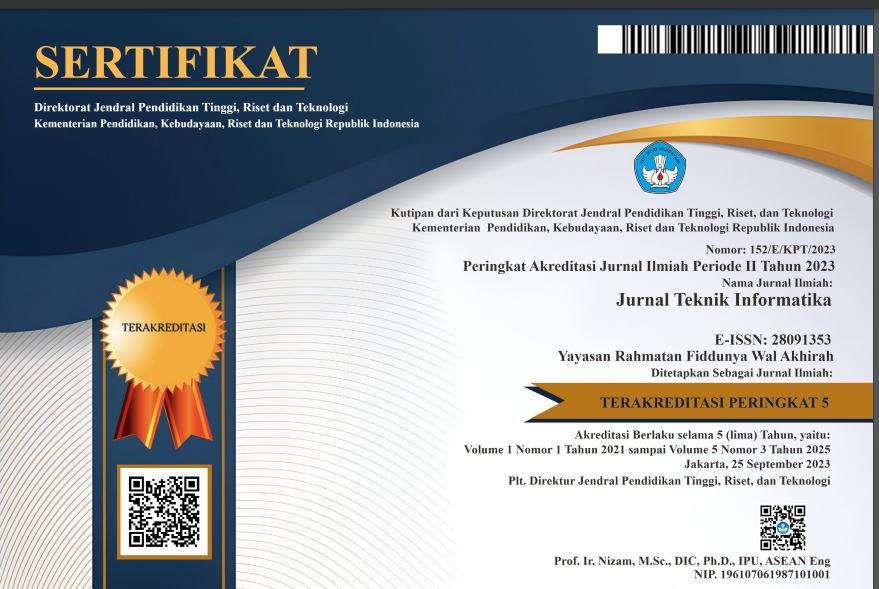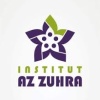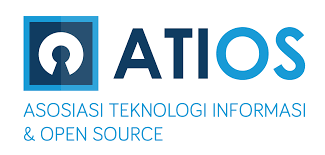Pengembangan Aplikasi Berbasis Web untuk Pemetaan Penerima Zakat Menggunakan Metode K-Means Clustering
DOI:
https://doi.org/10.58794/jekin.v4i2.721Keywords:
Clustering, Zakat, K-Means, Silhouette CoefficientAbstract
Zakat is an asset collected from muzaki and then distributed to those who are entitled to receive, namely 8 asnaf consisting of very poor people, people who are lacking, zakat management officers, people who have just converted to Islam, people who have a lot of debt, slaves who want to be free, travelers, and those who fight in the way of Allah. In Al-Huda Mosque, the data of zakat recipients currently only displays names, addresses, the number of family dependents, and the amount of zakat distributed. Takmir does not yet know the recipients who are entitled to zakat in large or small amounts. Therefore, an algorithm is required to streamline the grouping of data on zakat recipients in Al-Huda Mosque based on data ratios such as the number of family dependents, work, home conditions, and transportation. This study applies the K-Means Clustering method approach to group zakat recipient data. Web-based applications are developed using PHP to make it easier to manage data and grouping effectively. As a result, 7 recipients received high priority recipients, 30 medium priority recipients, and 16 low priority recipients. Testing of data clusters with the Silhouette Coefficient method showed that 4 clusters have strong structural values. For future research, additional variables can be extracted and analyzed to maximize more accurate and comprehensive grouping results
Downloads
References
N. Nurfiana and S. Sakinah, “Zakat Dan Kajiannya Di Indonesia,” Milkiyah J. Huk. Ekon. Syariah, vol. 1, no. 1, pp. 21–25, 2022, doi: 10.46870/milkiyah.v1i1.158.
M. A-Rahmaniy, “Zakat Sebagai Penentuan Pengembangan Moral, Ekonomi, dan Sosial Kemasyarakatan,” J. Ilm. Ekon. Islam, vol. 8, no. 3, p. 3466, 2022, doi: 10.29040/jiei.v8i3.6798.
E. P. A. Jessika, “Analisis Penerima Zakat Di Kelurahan Keparakan, Kecamatan Mergangsan, Kota Yogyakarta Tahun 2015,” 2017.
A. Poggiali, A. Berti, A. Bernasconi, G. M. Del Corso, and R. Guidotti, “Quantum clustering with k-Means: A hybrid approach,” Theor. Comput. Sci., vol. 992, p. 114466, 2024, doi: https://doi.org/10.1016/j.tcs.2024.114466.
J. Liao, X. Wu, Y. Wu, and J. Shu, “K-NNDP: K-means algorithm based on nearest neighbor density peak optimization and outlier removal,” Knowledge-Based Syst., vol. 294, p. 111742, 2024, doi: https://doi.org/10.1016/j.knosys.2024.111742.
A. Muhariya, I. Riadi, Y. Prayudi, and I. A. Saputro, “Utilizing K-Means Clustering for the Detection of Cyberbullying Within Instagram Comments,” Ingénierie des systèmes d Inf., vol. 28, no. 4, pp. 939–949, 2023, doi: 10.18280/isi.280414.
Z. R. Alfy, A. D. Baihaqie, and Z. F. A’ini, “Analisis Cluster K-Means pada Indikator Indeks Pembangunan Teknologi, Informasi, dan Komunikasi,” STRING (Satuan Tulisan Ris. dan Inov. Teknol., vol. 8, no. 2, pp. 183–188, 2023.
H. D. C. Vilca, L. M. O. Melgarejo, and ..., “Tuberculosis Detection architecture with image processing using the sift and k-means algorithm,” Comput. y …, 2020, [Online]. Available: https://search.bvsalud.org/global-literature-on-novel-coronavirus-2019-ncov/resource/fr/covidwho-914814
A. Jarrah and S. Amri, “Traitement du Signal Optimized FPGA-Based Implementation of Brain Tumor Detection by Combining K-Means and Grey Wolf Optimization Algorithms,” vol. 39, no. 6, pp. 1879–1891, 2022.
A. Muhariya, A. Riadi, and I. Prayudi, “Cyberbullying Analysis on Instagram Using K-Means Clustering,” JUITA J. Inform., vol. 10, no. 2, pp. 261–271, 2022, doi: 10.30595/juita.v10i2.14490.
X. Yang, W. Zhao, Y. Xu, C.-D. Wang, B. Li, and F. Nie, “Sparse K-means clustering algorithm with anchor graph regularization,” Inf. Sci. (Ny)., vol. 667, p. 120504, 2024, doi: https://doi.org/10.1016/j.ins.2024.120504.
R. K. Dinata, S. Safwandi, N. Hasdyna, and N. Azizah, “Analisis K-Means Clustering pada Data Sepeda Motor,” INFORMAL Informatics J., vol. 5, no. 1, p. 10, 2020, doi: 10.19184/isj.v5i1.17071.
I. Tri Julianto, D. Kurniadi, Y. Septiana, and A. Sutedi, “Alternative Text Pre-Processing using Chat GPT Open AI,” J. Nas. Pendidik. Tek. Inform., vol. 12, no. 1, pp. 67–77, 2023, doi: 10.23887/janapati.v12i1.59746.
N. Novitasari, N. D. Nuris, and R. Herdiana, “Penerapan Algoritma K-Means untuk Clustering Data Jumlah Penduduk Miskin Berdasarkan Kota/Kabupaten di Jawabarat menggunakan Rapidminer,” J. Inform. Terpadu, vol. 9, no. 1, pp. 68–73, 2023, doi: 10.54914/jit.v9i1.660.
N. T. Luchia, H. Handayani, F. S. Hamdi, D. Erlangga, and S. F. Octavia, “Perbandingan K-Means dan K-Medoids Pada Pengelompokan Data Miskin di Indonesia,” MALCOM Indones. J. Mach. Learn. Comput. Sci., vol. 2, no. 2, pp. 35–41, 2022, doi: 10.57152/malcom.v2i2.422.
I. Hermawati and J. Risambessy, “Asesmen Bantuan Sosial pada Masa Pandemi Covid-19 Bagi Keluarga Miskin dan Rentan di Daerah Istimewa Yogyakarta,” J. PKS, no. 1, pp. 5–24, 2021.
S. El Ayyubi, Ekawati Wahyuni, Pudji Muljono, and Irfan Syauqi Beik, “Peran Zakat terhadap Proses Perubahan Sosial melalui Pemberdayaan Masyarakat: Studi Narrative dan Bibliometrics,” Al-Muzara’Ah, vol. 11, no. 1, pp. 63–85, 2023, doi: 10.29244/jam.11.1.63-85.
I. F. M. Rachmat, “Aplikasi Pemesanan Makanan Dan Minuman Berbasis Web Menggunakan Model Prototype (Studi Kasus Roti Bakar 88),” Insa. Pembang. Sist. Inf. dan Komput., vol. 10, no. 1, pp. 39–48, 2022, doi: 10.58217/ipsikom.v10i1.215.
F. Schwenkreis, “Using the Silhouette Coefficient for Representative Search of Team Tactics in Noisy Data.,” DATA, 2022, [Online]. Available: https://www.scitepress.org/PublishedPapers/2022/111006/111006.pdf
Z. Chen, W. Yu, X. Ding, and Y. Shao, “Silhouette Coefficient Regularization Based Adversarial Domain Adaptation Network for Fault Diagnosis of Rotating Machinery,” 2022 IEEE Int. …, 2022, [Online]. Available: https://ieeexplore.ieee.org/abstract/document/9915959/
Downloads
Published
Issue
Section
License
Copyright (c) 2024 JEKIN - Jurnal Teknik Informatika

This work is licensed under a Creative Commons Attribution-ShareAlike 4.0 International License.
JEKIN-Journal of Informatics Engineering provides open access to anyone, ensuring that the information and findings in the article are useful to everyone. This journal article's entire contents can be accessed and downloaded for free. In accordance with the Creative Commons Attribution-ShareAlike 4.0 International License.

JEKIN-Journal of Informatics Engineering is licensed under a Creative Commons Attribution-ShareAlike 4.0














